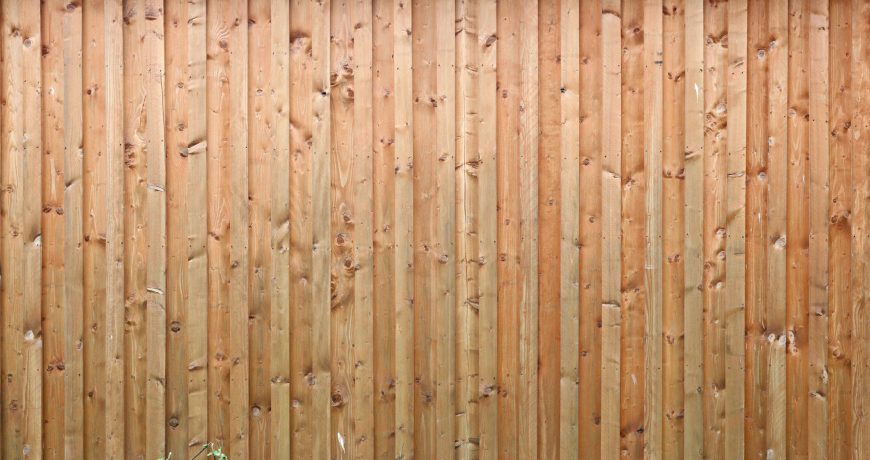How Long to Wait Before Staining a New Cedar Fence
Cedar fences are a top choice for homeowners looking to elevate their property’s appeal with their natural elegance and durability. Unlike most types of fencing, they look stunning on their own without stains or sealants.
However, even the most robust cedar fence can succumb to the elements without proper care. This is the appeal of sealing cedar fence boards. And, it may be why you’re wondering when to stain a cedar fence.
Stain too early, and you risk locking in moisture. But, you expose the wood to undue wear if you delay. Finding the sweet spot can feel like a guessing game, but we’re here to help you feel confident in your next steps.
Discover how long to wait before staining a new cedar fence below. We’ll also share expert insights on actually staining your fence to help you get the job done right for a long-lasting, beautiful fence!
Should I Stain My New Cedar Fence?
First things first…should I stain my new cedar fence? After all, the rustic, natural appearance of cedar may be what attracted you to this lumber choice in the first place.
Now, the truth is that cedar fencing doesn’t necessarily need to be stained or sealed. However, it’s a compelling consideration if you want to prolong your cedar fence lifespan.
We’ll discuss this and the other benefits of staining cedar fencing below before talking about how long to wait before staining a new cedar fence.
Enhancing the Aesthetics of Your Cedar Fence
Staining brings out cedar’s innate beauty. This wood is celebrated for its rich tones, from deep reds to creamy whites. A stain can enhance these colors, making them pop and lending a refined finish.
It’s like adding a touch of makeup to an already beautiful face – highlighting and accentuating the features you love. But, the practical side of things is all the more reason to consider staining…
The Protective Qualities of Staining
Staining isn’t just an aesthetic choice – it’s a shield. Cedar, though resilient, is still wood – and wood is susceptible to the whims of Mother Nature.
Rain, sun, and even the occasional critter can wear down your fence. A quality stain acts as a barrier, repelling water, resisting sun damage, and even deterring pests.
In essence, staining fortifies your cedar against the elements, ensuring its strength remains uncompromised. This leads to the final reason to consider staining…making the most of your investment!
Investment Protection: Increasing Fence Lifespan
Your cedar fence is an investment. Whether it’s the curb appeal it adds or the sense of security it provides, your fence offers tangible value. Staining extends this value by increasing the fence’s lifespan.
Think of it as a small, upfront cost that saves significant repair and replacement expenses down the line. Staining ensures your fence stands tall and proud for years, if not decades, by preventing rot, warping, and sun damage.
Why Knowing When to Stain a New Cedar Fence Matters
So you’ve decided to stain your cedar fence – great choice. That being said, knowing when to stain a new cedar fence is a delicate balancing act.
Why is timing so crucial, though? What happens if you stain a cedar fence too soon – or too long? Let’s talk about the importance of proper timing below before discussing when to stain a new cedar fence.
Allowing Natural Oils to Settle
Freshly installed cedar fences exude natural oils that give them their distinct aroma and resilience. However, these oils can interfere with the absorption of the stain.
You allow these oils to settle by waiting for the right moment, ensuring the stain adheres more effectively and lasts longer.
Preventing Moisture Lock
Staining too early, especially when the wood hasn’t dried sufficiently, can trap moisture within the cedar boards.
This moisture lock can lead to mold, mildew, and eventually rot, negating the very benefits you aim to achieve by staining.
Achieving the Desired Color
Stains react differently to fresh cedar compared to aged cedar. Fresh cedar might not reveal the true shade of the stain, which can leave you disappointed in the final product.
You ensure that the color you’ve chosen manifests beautifully on the cedar and matches your aesthetic aspirations by waiting an appropriate amount of time.
How Long to Wait Before Staining a New Cedar Fence: Advice From the Experts at Viking Fence
Now, let’s talk about how long to wait before staining a new cedar fence. As you know now this is a balance between ensuring the wood is receptive and maximizing the stain’s protective qualities.
We recommend waiting approximately 3 to 5 weeks for the wood to acclimate to its new environment if you’re using freshly milled cedar. This period allows for the natural oils to settle and the wood’s moisture content to decrease.
The time of year plays a significant role. Cedar might be ready for staining within a month in drier climates or during summer months, for example. However, waiting up to 2-3 months might be necessary in more humid regions or during rainy seasons to ensure the wood is adequately dry.
You don’t have to play the guessing game with how long to wait before stianing a new cedar fence, though. The sprinkle test is an easy way to test the wood’s moisture content.
Sprinkle a few droplets of water onto the cedar. If the water beads up, it’s too soon. If the wood absorbs the water quickly, it’s a green light for staining. Remember, the key is for the stain to penetrate, not simply sit atop the wood.
The type of stain you intend to use plays a role in when to stain a new cedar fence as well. Oil-based stains generally require a drier wood compared to water-based ones.
Always check the manufacturer’s recommendations. We typically recommend oil-based stains for deeper penetration and longer-lasting protection.
While waiting for the right moment is crucial, waiting excessively can leave your cedar fence exposed to elements for too long. Sunlight can start to bleach the wood, and prolonged exposure to moisture without protection can instigate mold or mildew growth. You shouldn’t ever need to wait more than 2 months to stain your cedar fence.
Tips on Actually Staining Your Fencing
Staining a cedar fence is an art that requires precision, knowledge, and the right tools. It can transform your fencing into a resilient, radiant barrier when done correctly.
So, before we wrap up our guide on when to stain a new cedar fence, let’s dive deep into some key tips from our arsenal at Viking Fence as you set out on this venture.
First things first – choose the right stain for your region and fencing goals.
Choosing the Right Stain
Oil-based stains penetrate deeper into the cedar, providing longer-lasting protection against the elements. Water-based stains are easier to clean and environmentally friendlier but might require more frequent reapplications.
You should also consider opacity. Stains come in clear, semi-transparent, and solid colors. Clear stains best preserve cedar’s natural beauty, while solid colors offer maximum protection against UV rays.
Best Practices for Even Application
Ensure the cedar is clean and free from dust or mold before actually getting ready to stain the fence. Pre-treated wood should be sanded lightly to enhance stain absorption.
In terms of application, it’s better to apply two thin coats than one thick one. This ensures more even coverage and reduces the risk of dripping or pooling. The tools you use will influence how you actually go about applying the stain…
Tools to Use: Brushes, Rollers, or Sprayers
There are three approaches you can use to staining your fencing:
- Brushes: Ideal for precision work, especially around hardware or intricate designs. They work the stain into the wood’s grain.
- Rollers: Perfect for covering large, flat surfaces quickly. However, they might not penetrate the wood’s grain as effectively as brushes.
- Sprayers: These are efficient for vast stretches of fencing but require a skilled hand to ensure even coverage.
How Often to Restain
While the frequency can vary based on local climate and the stain’s quality, generally, a cedar fence should be restained every 2-3 years. Clear stains may require more frequent applications due to lower UV resistance.
Potential Challenges and How to Overcome Them
Here are a few common challenges you may experience along with tips to overcome them for a beautifully stained cedar fence:
- Weather Concerns: Staining under direct sunlight can cause the stain to dry too quickly, leading to uneven absorption. Similarly, rain soon after staining can wash away the product. Always check the forecast.
- Sticky Surfaces: If the stain remains tacky long after application, it’s likely too thick. Sand lightly and reapply a thinner coat.
- Bleeding Knots: Some knots might seep sap after staining. Use a knot-sealing product before staining to prevent this.
Armed with these insights you can feel confident getting this job done right. That being said, it’s time to wrap up this guide on how long to wait before staining a new cedar fence.
Wrapping Up Our Guide on When to Stain a New Cedar Fence
The essence of a cedar fence isn’t just in its robust nature, but in its elegant, ever-evolving patina that tells stories of seasons and time. Deciding how and when to stain a new cedar fence can make all the difference between a short-lived fence and one that stands tall for decades.
From understanding the nuances of choosing the right stain, respecting the wood’s natural timeline, to mastering the art of the application – each step holds weight and merit.
You can learn more about how to restore a wooden fence in our blog. Or, you can explore the finest selection of western red cedar fence pickets in Austin and western red cedar fence pickets in San Antonio, right here at Viking Fence!

